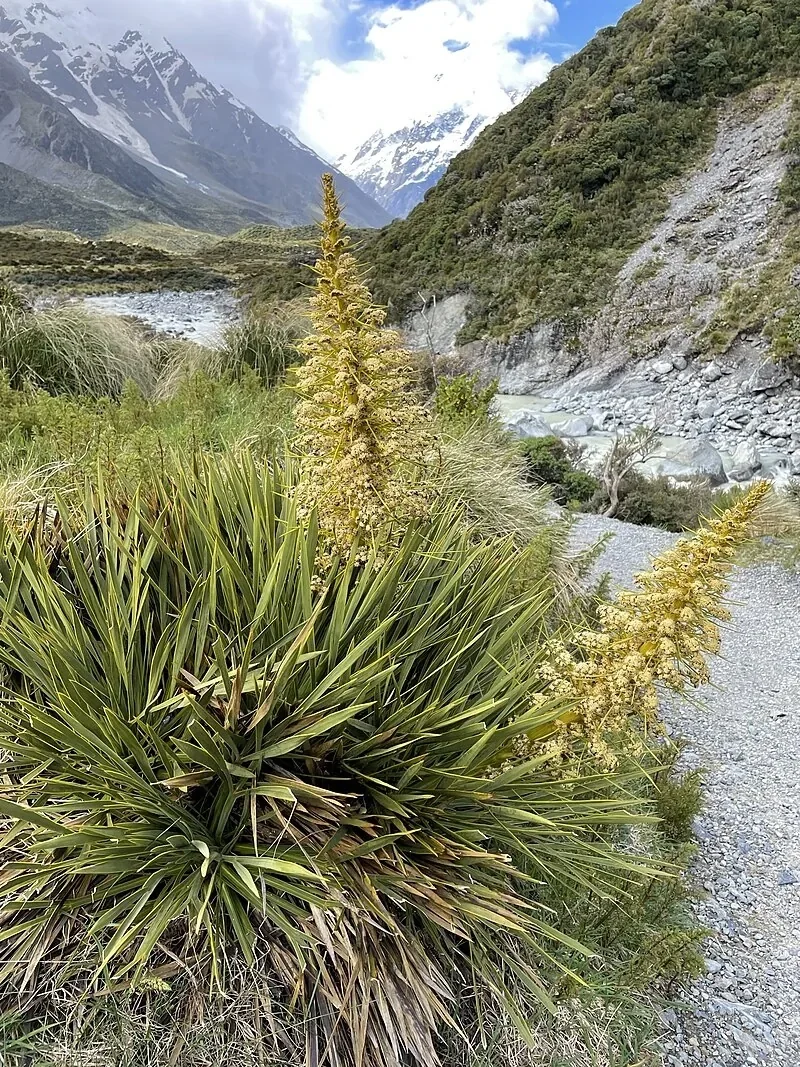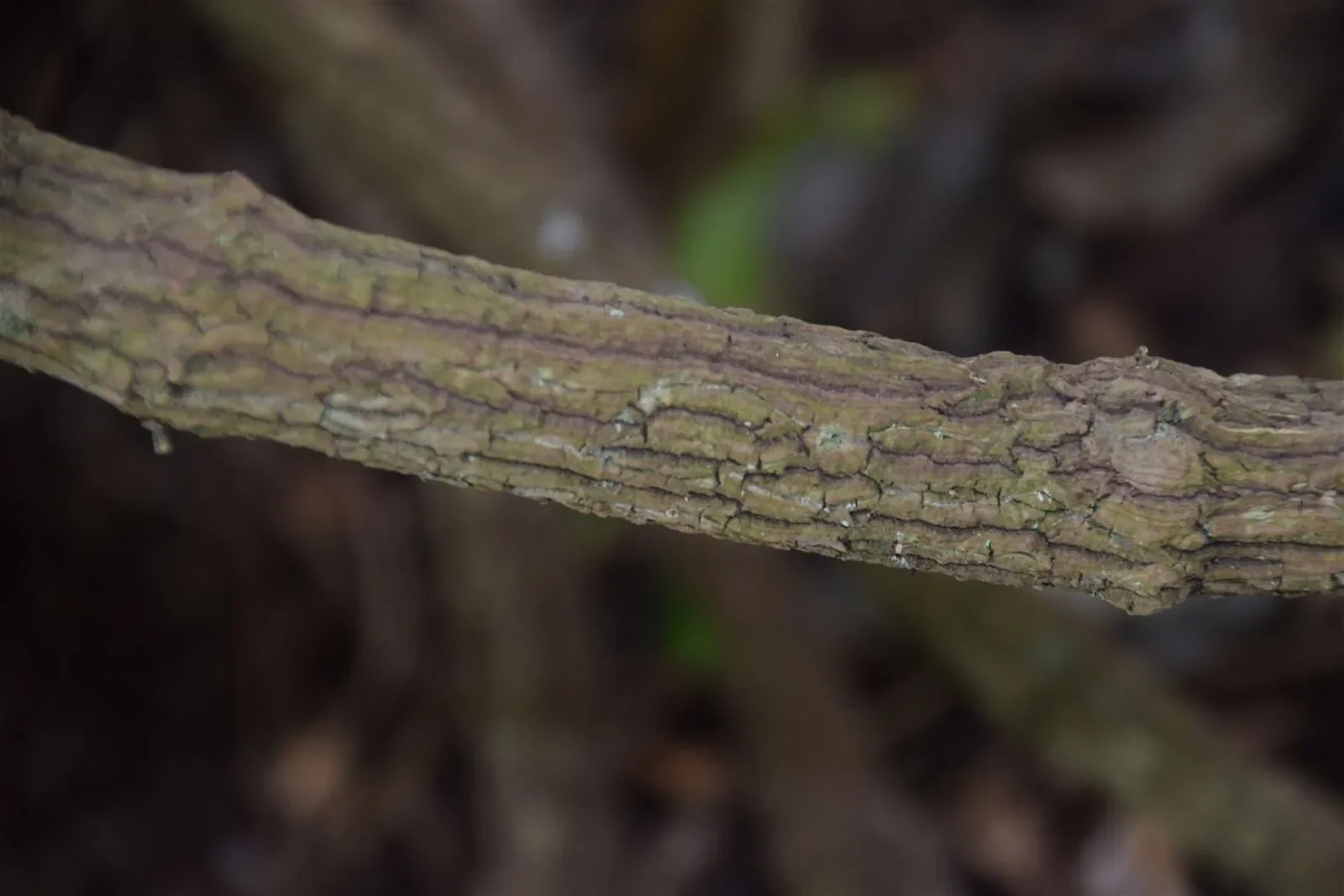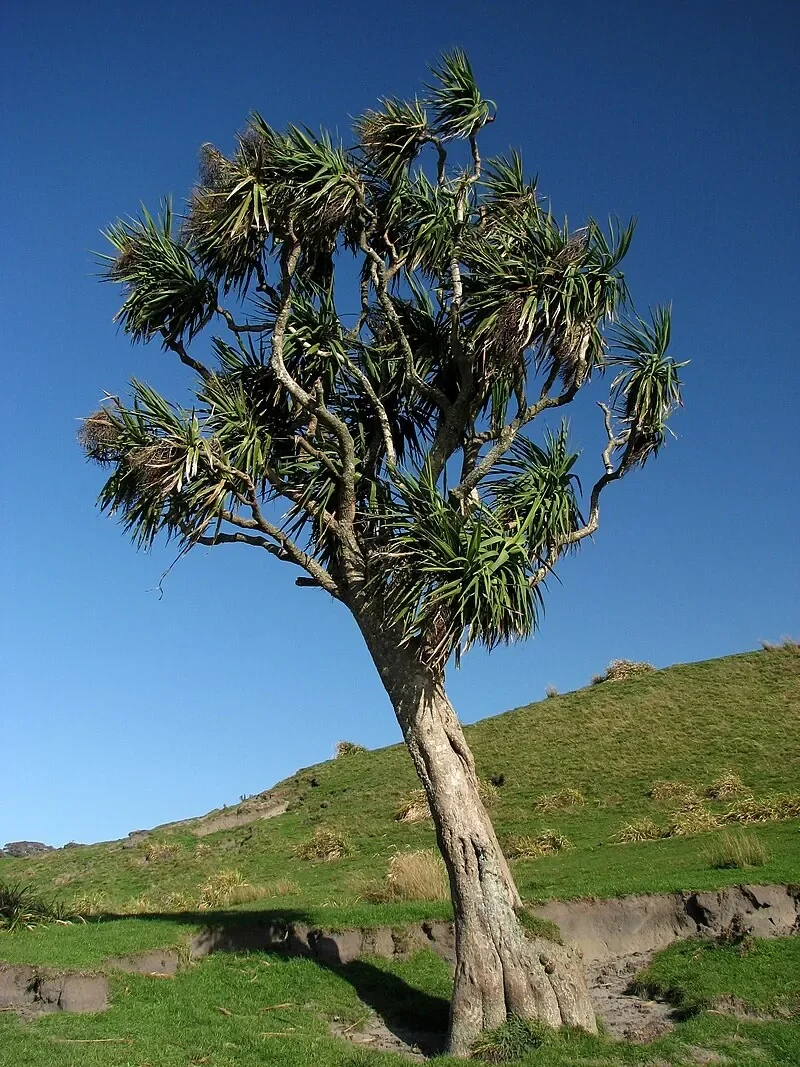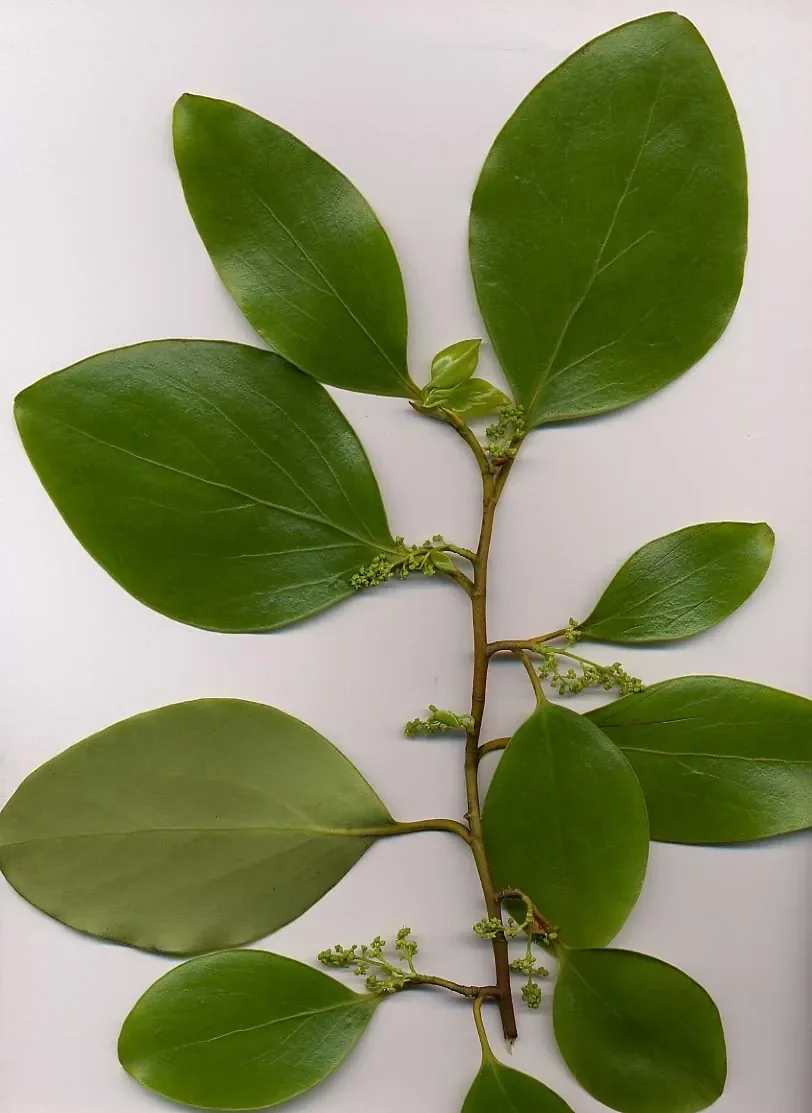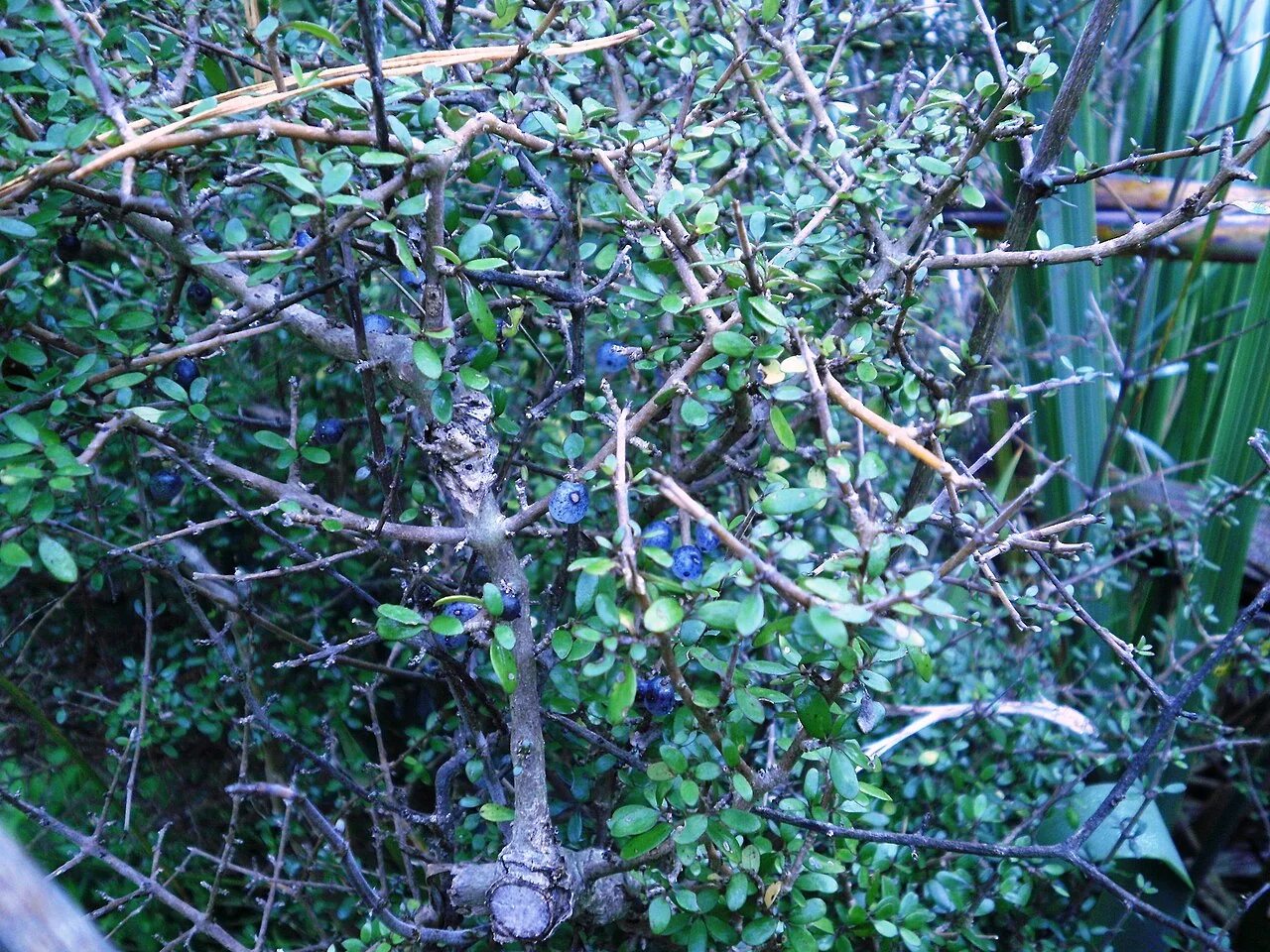
Mingimingi
Coprosma propinqua
This native plant, known as Mingimingi (scientific name: Coprosma propinqua), is a remarkable species endemic to New Zealand. It is characterized by its unique features, ecological role, and cultural significance. This comprehensive guide provides detailed information on its care, propagation, and importance within the New Zealand ecosystem. Understanding this plant contributes to the appreciation of our rich biodiversity and heritage, and supports conservation efforts for shrubs.

Plant Description
Coprosma propinqua, commonly known as Mingimingi or Swamp Coprosma, is a highly adaptable evergreen shrub or small tree native to New Zealand. It typically grows between 1 to 3 meters tall but can reach up to 7 meters in ideal conditions. Characterized by its compact, bushy, and often divaricating growth habit, its wide-angled, interlaced branches give it a distinctive appearance. The leaves are small, measuring approximately 1 to 3 centimeters in length, elliptical or lanceolate in shape, and typically dark green, thick, and glossy with smooth margins. The underside of the leaves may feature two small pits known as domatia. The branches are covered in grey bark, which can make the plant appear almost black from a distance. The flowers are small, inconspicuous, and generally greenish or yellowish, borne in clusters. Coprosma propinqua is a dioecious species, meaning individual plants are either male or female, requiring both sexes for successful pollination and fruit production. Flowering occurs from August to September, followed by fruiting from March to April. The fruit is a fleshy drupe, spherical or ovoid, measuring about 5 to 8 millimeters in diameter. These berries mature from green to a striking translucent dark blue, dark purple, or indigo colour, although sometimes they can be yellow or white. These vibrant berries are an important food source for native birds, which play a crucial role in seed dispersal.
Quick Facts
| Scientific Name | Coprosma propinqua |
|---|---|
| Height | 1-3 meters (up to 7 meters) |
| Spread | 1-3 meters |
| Water Needs | Moderate to high |
| Light | Full sun to partial shade |
| Frost Tolerance | High |
| Salt Tolerance | High |
| Growth Rate | Moderate |
| Lifespan | Long |
Climate Best Suited to
Coprosma propinqua exhibits remarkable adaptability to a wide range of climatic conditions found throughout New Zealand. Its natural distribution spans various habitats, from coastal areas to forests and shrublands, and even swampy environments. This resilience makes it suitable for cultivation across many regions, provided its basic needs for moisture and light are met. It thrives in temperate zones, enduring both coastal exposure and inland frosts.
Regional Suitability
| City | Climate Suitability |
|---|---|
| Auckland | Highly suitable |
| Wellington | Highly suitable |
| Christchurch | Suitable (protect young plants from extreme frost) |
| Dunedin | Suitable (protect young plants from extreme frost) |
| Hamilton | Highly suitable |
Plant Habitat
Coprosma propinqua is naturally found throughout New Zealand, showcasing its broad ecological amplitude. It thrives in diverse environments, including riparian zones along streambanks, swampy forests, open shrublands, and coastal margins where it can withstand salt spray. Its presence in various forest types, particularly those with damp or boggy soils, highlights its preference for moist conditions, although it is remarkably adaptable to drier sites once established. The divaricating growth habit often provides shelter for small fauna in these habitats.
Plant Conservation
According to official classifications, Coprosma propinqua is classified as "Not Threatened." This indicates a healthy and stable population across its natural range within New Zealand. Its widespread distribution and adaptability contribute to its secure conservation status. However, ongoing habitat preservation and careful management are always beneficial to ensure the continued vitality of native species.
Growing Requirements
Soil Requirements
Coprosma propinqua is highly adaptable to a variety of soil types. It performs best in moist, well-drained soils that are neutral to slightly acidic. However, it can tolerate a wide spectrum of soil conditions, including poor, heavy clay soils, loamy soils, and sandy soils. This flexibility makes it a versatile choice for many garden and restoration projects. Good drainage is beneficial, but its ability to thrive in wet conditions also makes it suitable for damp sites.
- Prefers moist, well-drained soils.
- Tolerant of heavy clay, loam, and sandy soils.
- Thrives in neutral to slightly acidic pH.
- Can tolerate wet conditions.
Light Requirements
Coprosma propinqua is versatile regarding light exposure, performing well in both full sun and partial shade. In full sun, its growth tends to be denser and more compact, often leading to more prolific fruiting. While it can adapt to partial shade, very deep shade might result in sparser growth and reduced berry production. For optimal health and appearance, a position receiving at least a few hours of direct sunlight daily is recommended.
- Full sun for denser growth and more fruit.
- Tolerates partial shade.
- Avoid deep shade for best results.
Water Requirements
Once established, Coprosma propinqua is remarkably drought-tolerant, but it thrives with consistent moisture. During dry periods, especially in its establishment phase, regular watering will promote vigorous growth. Its natural habitat often includes damp and swampy areas, indicating a good tolerance for wet feet, making it suitable for rain gardens or areas with occasional waterlogging. Ensure adequate drainage to prevent root rot in prolonged waterlogged conditions.
- Prefers consistent moisture, especially when establishing.
- Drought-tolerant once established.
- Tolerates wet conditions and occasional waterlogging.
Planting Guide
Coprosma propinqua, known as Mingimingi, is a robust and adaptable native New Zealand plant that can be successfully planted in a variety of settings. When choosing a planting site, consider its mature size and its divaricating habit, which can spread as wide as it is tall. This plant thrives in both full sun and partial shade, making it a flexible choice for different garden aspects. Ensure the chosen location has soil that is moist but well-drained, though it can tolerate heavier clays and sandy soils, and even damp conditions, due to its natural habitat preferences. Before planting, prepare the soil by incorporating some organic matter, such as compost, to improve soil structure and fertility. Dig a hole that is twice as wide as the plant's root ball and just as deep. Carefully remove the plant from its container, gently tease out any circling roots, and place it in the centre of the hole. The top of the root ball should be level with the surrounding ground. Backfill the hole with the amended soil, firming it gently around the base of the plant to remove air pockets. After planting, water thoroughly to settle the soil. For the first few months, consistent watering is crucial to help the plant establish a strong root system. While Coprosma propinqua is drought-tolerant once established, regular watering during prolonged dry spells will encourage healthier growth and more abundant fruiting. Mulching around the base of the plant with organic material will help retain soil moisture, suppress weeds, and regulate soil temperature. Consider its use in shelterbelts, hedges, or as a specimen plant. Its dense, tangled branches provide excellent shelter and nesting sites for native birds. Plant multiple specimens if you wish to guarantee fruit production, as it is dioecious (separate male and female plants). Although it is generally low-maintenance, occasional light pruning can help maintain its shape and density.
Ecological Role
Coprosma propinqua plays a vital ecological role within New Zealand's native ecosystems. Its dense, divaricating growth habit provides crucial shelter and nesting opportunities for a variety of native birds, insects, and lizards, especially in open or regenerating areas. The plant's most significant contribution is its prolific production of berries, which ripen to a dark blue or purple. These fleshy drupes are a highly valued food source for numerous native bird species, including tūī, bellbirds, and kererū, which in turn aid in the dispersal of Coprosma seeds, facilitating forest regeneration and biodiversity. Its presence also helps stabilize soil in riparian and coastal environments.
Uses & Significance
Garden Uses
Coprosma propinqua is a highly versatile plant for various landscaping applications in New Zealand gardens. Its dense, divaricating growth makes it an excellent choice for informal hedges, shelterbelts, and windbreaks, particularly in exposed or coastal areas where its salt tolerance is a significant advantage. It can also be used effectively as a specimen shrub, providing textural interest with its intricate branching and seasonal colour with its vibrant berries. Its ability to tolerate wet conditions means it can be incorporated into rain gardens or planted alongside ponds and streams.
- Informal hedges and screens.
- Shelterbelts and windbreaks.
- Specimen shrub for textural interest.
- Suitable for riparian planting and rain gardens.
- Provides food and habitat for native birds.
Coprosma propinqua holds various cultural significances, particularly within Māori traditions. While not as prominent as some other native plants, it was traditionally recognized for its practical uses. The fruit, though somewhat insipid, was occasionally consumed. More notably, the wood could be processed to extract a yellow dye, utilized for colouring natural fibers and weaving materials. Beyond practical applications, the plant contributes to the rich tapestry of New Zealand's natural heritage, often featuring in local ecological narratives and providing a connection to the traditional landscape.
- Traditional Māori uses, including edible fruit.
- Source of a yellow dye from its wood.
- Part of New Zealand's natural and cultural landscape.
Ecological Value
The ecological value of Coprosma propinqua is substantial. As a native species, it plays a crucial role in supporting local biodiversity. Its dense structure offers vital refuge and breeding sites for indigenous birds, insects, and lizards. The plant's berries are a key food source for frugivorous native birds, which are essential for seed dispersal, thereby contributing to the health and regeneration of native forests and shrublands. Its adaptability to various soil types, including damp and coastal conditions, makes it important for stabilizing vulnerable ecosystems.
- Provides shelter and nesting sites for native birds, insects, and lizards.
- Berries are a vital food source for native birds, aiding seed dispersal.
- Contributes to soil stabilization in various habitats.
- Supports local biodiversity and ecosystem health.
Cultural Significance
This plant contributes to the rich tapestry of New Zealand's native flora, known collectively as Te Wao Nui a Tāne. While specific traditional uses may vary or be less documented for some smaller species, all native plants are considered taonga (treasures) and possess a mauri (life force).
They are integral to the cultural landscape, featuring in local biodiversity and often indicating the health of the environment.
Landscaping Uses
Coprosma propinqua is an excellent choice for ecological landscaping, native plantings, and low-maintenance gardens. Its robust nature and attractive berries make it suitable for informal hedging, providing excellent year-round structure and shelter. It excels in coastal plantings due to its high salt tolerance and can also be effectively used in revegetation projects, particularly in wet or degraded sites. Group plantings create a naturalistic look and maximize the visual impact of its divaricating form and colourful fruit.
Seasonal Care Calendar
Spring
As new growth emerges in spring, ensure the plant receives consistent moisture, especially if the weather is dry. This is a good time for light structural pruning to maintain shape or remove any winter-damaged branches.
- Ensure consistent moisture for new growth.
- Perform light structural pruning.
Summer
During warmer summer months, focus on maintaining consistent moisture levels. While established plants are drought-tolerant, supplemental watering during prolonged dry periods will support continued healthy growth and fruit development.
- Water consistently during dry spells.
- Monitor for pests, though generally resilient.
Autumn
Autumn is when Coprosma propinqua's distinctive dark berries are most prominent, providing a visual feast and food for birds. Reduce watering as temperatures cool and rainfall typically increases.
- Enjoy the vibrant berries.
- Reduce watering frequency.
Winter
In winter, Coprosma propinqua is largely dormant and requires minimal care. Ensure good drainage to prevent waterlogging, especially in areas with heavy winter rainfall. Established plants are highly frost-tolerant.
- Minimal care required.
- Ensure good drainage.
When to Prune and How Much
Coprosma propinqua generally requires minimal pruning due to its naturally attractive, divaricating growth habit. Pruning is primarily done to maintain a desired shape, control size, or remove any dead, diseased, or damaged branches. The best time for light pruning is in late winter or early spring, just before new growth begins, as this allows the plant to recover quickly. For more significant shaping or size reduction, it can tolerate harder pruning, but this should be done judiciously. Always use clean, sharp secateurs to make clean cuts.
- Prune to maintain shape and size.
- Remove dead, diseased, or damaged branches.
- Best done in late winter or early spring.
Its dense growth makes it suitable for hedging, where more frequent light trimming can be applied to create a formal barrier. However, allowing its natural form to develop often showcases its unique character best.
How to Grow Mingimingi
From Seed
Propagating Coprosma propinqua from seed can be a rewarding process, though it requires patience due to potential dormancy. The seeds are contained within the fleshy drupes that ripen from March to April. For best results, collect fresh, ripe berries.
- Collect ripe, dark blue or purple berries from healthy female plants in autumn or early winter.
- Clean the seeds by removing all the fleshy pulp. This can be done by mashing the berries and washing the pulp away under running water, or by fermenting them slightly to loosen the pulp before washing.
- Stratification may be necessary. Place the cleaned seeds in a moist, sterile medium (like sand or peat moss) in a sealed bag or container and refrigerate for 2-3 months. This mimics natural winter conditions.
- Sow the stratified seeds in a well-draining seed-raising mix in trays or pots. Lightly cover the seeds with a thin layer of mix.
- Keep the seed trays moist and in a sheltered position, ideally at temperatures around 15-20°C. Germination can be erratic and may take several months to over a year.
- Once seedlings are large enough to handle, prick them out and transplant into individual pots. Grow them on in a sheltered location until they are robust enough for planting out.
Fresh seeds generally have a better germination rate. Ensure good air circulation to prevent damping off.
From Cuttings
Propagating Coprosma propinqua from semi-hardwood cuttings is a reliable method and often produces faster results than growing from seed. Cuttings can be taken in late summer or autumn.
- Take semi-hardwood cuttings 10-15 cm long from healthy, non-flowering shoots. The wood should be firm but still flexible.
- Remove the leaves from the lower two-thirds of the cutting.
- Dip the base of the cutting in a rooting hormone powder or gel.
- Insert the cuttings into a well-draining propagation mix (e.g., a mix of peat and perlite or sand).
- Place the trays in a warm, humid environment, such as a propagating frame with bottom heat, or cover with a plastic dome to maintain humidity.
- Keep the mix consistently moist but not waterlogged. Rooting typically occurs within 6-12 weeks.
- Once well-rooted, pot up the new plants into individual containers and grow them on before planting out.
Additional Methods
While less common, Coprosma propinqua can also be propagated through layering, which is a simple method often suited for home gardeners.
- Select a low-growing, flexible branch.
- Gently wound a section of the stem by scraping away a small ring of bark.
- Bury the wounded section in the soil, ensuring it remains attached to the parent plant. Anchor it with a U-shaped wire or peg.
- Keep the soil around the buried section consistently moist.
- Once roots have formed (this may take several months to a year), sever the new plant from the parent and transplant it.
General Propagation Tips (Seeds & Cuttings)
Successful propagation of native New Zealand plants requires attention to detail and patience. When growing from seed, it is essential to start with fresh, viable seeds collected when they are fully mature. Clean the seeds thoroughly to remove any fleshy pulp, which can inhibit germination. Sow the seeds on the surface of a seed-raising mix that is free-draining yet moisture-retentive. A mix of peat and coarse sand or perlite often works well. Cover the seeds lightly with a fine layer of grit or sieved potting mix, or leave them uncovered if they require light to germinate. Keep the trays in a sheltered, shaded spot and maintain consistent humidity; a plastic cover can help but ensure there is adequate ventilation to prevent fungal diseases. Germination can be erratic, sometimes taking several months, so do not discard the trays too early. For vegetative propagation, semi-hardwood cuttings are often the most successful method for shrubby species. Take cuttings in late summer or early autumn, selecting healthy, non-flowering shoots. Trim them to about 10-15 cm in length, making a clean cut just below a node. Remove the lower leaves and dip the cut end in rooting hormone to encourage root development. Insert the cuttings into a propagating mix, ensuring they are firm and stable. Place them in a humid environment, such as a mist unit or a covered frame, out of direct sunlight. Rooting can take anywhere from a few weeks to several months. Once roots have formed, pot the young plants into individual containers and harden them off gradually before planting out. Division is another effective method for clump-forming plants like sedges, grasses, and lilies. This is best done in autumn or early spring when the plant is actively growing. Lift the clump carefully and tease the roots apart, using two garden forks or a sharp knife if the clump is dense. Ensure each division has a good root system and healthy shoots. Replant the divisions immediately, watering them well to settle the soil around the roots. With proper care, these new plants will establish quickly and grow into healthy specimens. By employing these methods, you can successfully expand your collection of native flora and contribute to the preservation of New Zealand's unique botanical heritage.
Pests & Diseases
Coprosma propinqua is a remarkably resilient plant and is generally not prone to serious pests or diseases. Its robust nature makes it a low-maintenance addition to any garden. Occasionally, young plants might experience minor issues with common garden pests like aphids, but these are rarely severe enough to cause significant damage and can often be managed with simple horticultural oil sprays or by encouraging natural predators. Ensure good air circulation and avoid overly wet conditions to prevent fungal issues, though these are uncommon.
Bonus Tip
For attracting native birds to your garden, plant several Coprosma propinqua specimens to ensure both male and female plants are present, guaranteeing a plentiful supply of their attractive, nutrient-rich berries.

